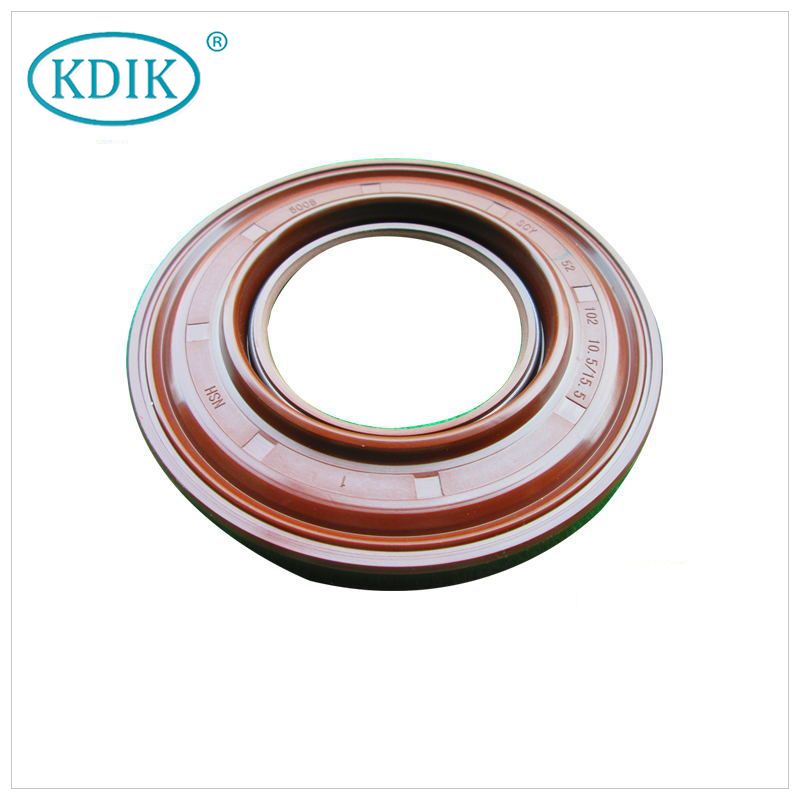What Materials Are Available for Oil Seals
An oil seal is also known as a rotary shaft seal, shaft seal, lip seal, elastomeric lip seal, or any variation of these. It is a simple device used to remove dust, dirt, water or any other contaminants while retaining the lubricant in a rotary shaft device. Often, it has been developed as a way to protect rotating shaft bearings.

The following shows the selection of oil seal materials.
1, Aflas, temperature range between -10°C and +205°C, made of special fluoroelastomer (FKM), resistant to steam, petroleum, amine corrosion inhibitors and hydrogen sulfide.
2,Carboxylated Nitrile, temperature range -55°C to +135°C. Carboxylated Nitrile seals are made of a low temperature resistant compound that also has excellent abrasion resistance. Resistant to water and oil,
3, Viton, temperature range -20°C to +205°C, FKM fluorocarbon seals are highly resistant to solvents and petroleum oils. As a result, they are ideally suited for high temperature installations and have low compression permanent deformation properties. In addition, they are suitable for high chemical exposure and hard vacuum applications. Resistant to transmission fluids, gasoline, and petroleum.
4, Fluorinated ethylene propylene, temperature range -55°C to +205°C (depending on core material), FEP oil seals are an excellent choice for static and slow intermittent dynamic applications.FEP suffers from bad memory disturbance at low temperatures, however, FEP is very tough and is a chemically inert polymer with an amazing operating range. It can withstand most chemicals.
5, Fluorosilicone Rubber , with a temperature range between -60°C and +180°C, combines the good low and high temperature durability of silicon (VMQ) with the resistance of fluorocarbons to solvents, oils and fuels. It is also highly resistant to gasoline and petroleum.
6, Nitrile Rubber, with a temperature range between -40°C and +135°C, (BR) is the most widely used elastomer in the fluid sealing industry today. In addition, NBR seals are extremely resistant to hydraulic fluids, water, silicone greases, petroleum-based oils and fluids, and alcohols. Nitrile rubber exhibits great stability in working properties such as high tensile strength, high abrasion resistance and low compression permanent deformation as well as low cost.
7, Polyacrylate, temperature range -20°C to +150°C. Polyacrylate oil seals are more resistant to high temperatures than NBR. As a result, they are ideal for high surface velocity oil applications.
8, Polyurethane, temperature range -15°C and +85°C. Polyurethane oil seals are used in high stress hydraulic applications where high pressure compounds are subject to wear. However, polyurethane exhibits very high wear resistance and high tensile strength. Resistant to hydraulic fluids, oil ,
9, Silicone, temperature range -60°C to 250°C, Silicone (VMQ) oil seals have a high lubricant absorption capacity. It minimizes wear and friction in some applications.
10, Perfluoroelastomers, which are made from elastomers, have the broadest chemical resistance of all our elastomer materials. They combine all the elasticity and sealing strength of elastomers with chemical resistance similar to that of FEP (fluorinated ethylene propylene). Resistant to: most chemicals.
Xingtai Honglei Seal Manufacturing registered trademark "KDIK" is senior manufacturer for global markets. We are professional oil seals factory with more than 18 years experience. Contact us if you are intersted in more about oil seals.



